
Volvo V90 long-term test
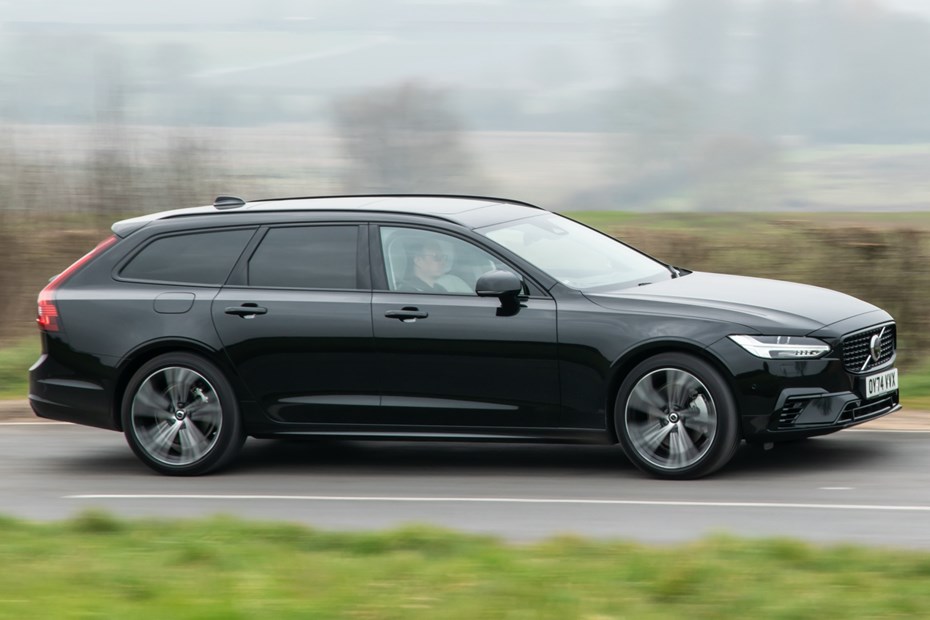
With the estate car no longer the default choice of wheels for families, is it still relevant in a world of SUVs? To find out, we’re running a Volvo V90 T6 Recharge for a few months. Can this secretly speedy yet efficient wagon win us over?
Reports by Alan Taylor-Jones
Jump to:
Update 4: Checking out the competition
Update 5: An oasis of calm. Mostly
Update 6: Goodbye V90, goodbye Volvo estates full stop
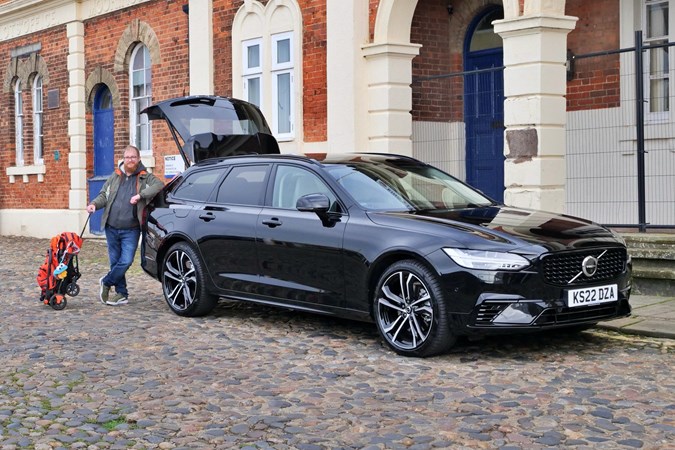
Update 1: Howdy
Since the birth of our first child, it seems as though I’m working my way through family friendly types of cars. We’ve had a long-term SUV (albeit a small one), followed by an MPV and now a rather dashing Volvo V90 estate. Popular opinion suggests the next six months bending over to install our son in his car seat is going to wreck our backs, but it’s a risk my wife and I are willing to take.
It’s certainly much lower than the Audi Q2 and BMW 2 Series Active Tourer that proceeded, with impressive looking rear legroom and a generous boot provided by the V90’s considerable length and width. Even so, it should be efficient as it’s the plug-in hybrid T6 Recharge complete with a larger 18.8kWh battery pack that’s new for 2022.
Up front is a 2.0-litre turbocharged petrol engine that’s less powerful than the V90 T8 previously run by Keith Adams, with a more potent electric motor powering the rear wheels. Combined they produce 350hp (nearly 60hp down on the old T8) which is enough for a 5.2 second 0-62mph time, with safety conscious Volvo pegging the top speed at 112mph.
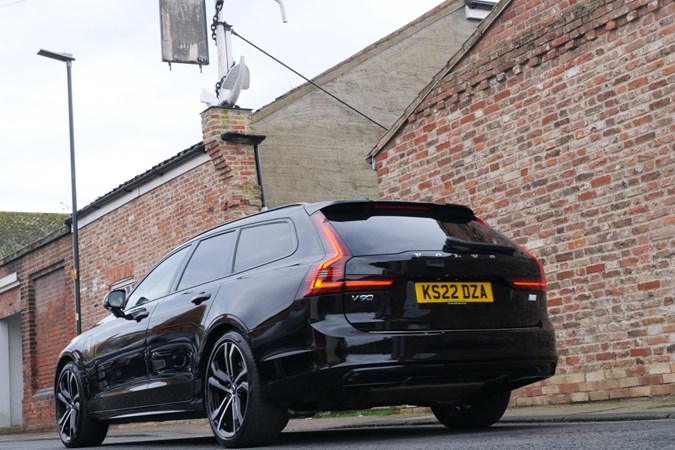
Increased range
More importantly, the official electric only range is above 50 miles. Not only does this mean you can spend more time with the engine off, it also puts the V90 into a much cheaper company car tax bracket than before. However, with a few long trips planned to visit friends we’ve left behind in Sussex and Surrey after moving to Norfolk, I’m hoping the engine can deliver decent economy on its own.
As for spec, a 2020 update of the V90 introduced a new Bowers & Wilkins audio system that’s only available on top Ultimate trim. In the interests of thorough reviewing (not to mention self-levelling rear air suspension, 20in alloy wheels, a panoramic roof and head-up display), it’s this model I selected with metallic black paint and a blonde interior.
It’s already been suggested by a few colleagues with kids that a light interior is a terrible idea, although I’ve convinced myself the wipe-clean leather will make everything OK. We just need to keep our son well away from the optional ventilated front seats with their perforated Nappa leather, something the lack of front Isofix should make easy.
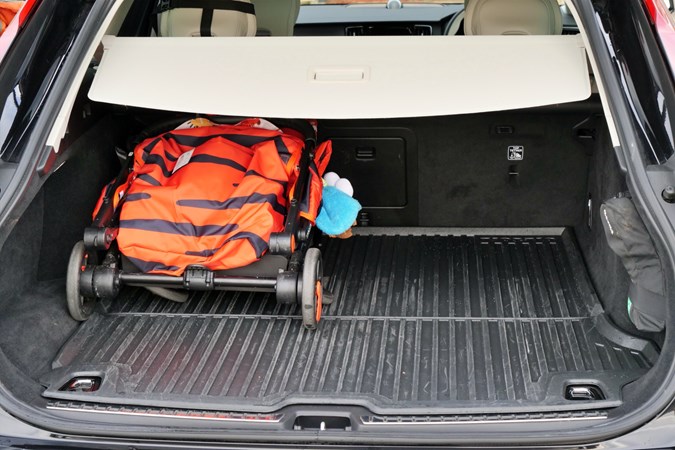
Additional options
The only other option I’ve added is a protection package with a rubber boot mat and chromed metal bumper protector. Knowing how pushchairs, prams and buggies seem to love expanding when you least expect them to, it should save our paint. I am slightly gutted the bumper protector is the only bit of brightwork on the car, though. Given the choice I would have much rather have a chrome grille and window surrounds rather than the default black.
So, how am I getting on? Well, the boot isn’t the biggest in the class but it’ll comfortably swallow our bulkiest pushchair with space to spare, while our orange stroller pictured disappears into a corner of the boot very nicely. You do pay for that capacity though, the V90 feels massive compared to our 2 Series Active Tourer in terms of length and width.
It certainly makes you appreciate the surround-view camera system. Not only does it make squeezing through the awkwardly angled gate onto our driveway easier, it helps you avoid kerbing those massive wheels through tight side streets. But while the cameras are great at getting you into spaces, the V90 requires a big one.

Despite this, my wife has already proclaimed this to be the best car in the world and does not want to give it back in six months. Seeing as I bought a lottery ticket on hearing this, it’s fair to say I’m rather happy with it, too.
Not that it’s perfect, I’ve already spotted a couple of annoyances that I’ll come on to in future reports and while the electric range impresses, we’ve not come near to the claimed figures. For now, it’s time to crank up the stereo and start putting on the miles.
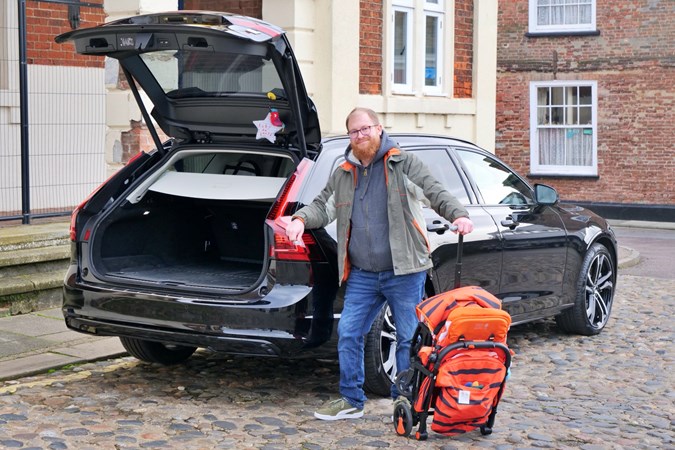
Update 2: The sensible stuff
Despite having a few friends with children warning us of what was ahead, I am still constantly amazed by the mountains of stuff required to keep our son warm, fed, entertained and happy whilst out and about. That often led to the back seats of previous family motors being used for shopping and anything else purchased when out, not good when friends or family want to tag along.
Now, the V90’s 560-litre boot isn’t the biggest in the class – step forward Mercedes E-Class estate – and is even beaten by the far smaller Volkswagen Golf estate, but in isolation it’s still big enough for us. A weekly shop sits comfortably alongside our son’s biggest buggy along with all the bags, rain covers and other accessories we need.
However, while it all fits in with space to spare, there’s not much to stop it sloshing around as we drive. The sizeable underfloor cubby is filled with charging cables, and although there is a load divider that pops out of the floor, it’s a faff to operate with our boot protector in place. While I’m moaning, I’d also like to see some remote rear seat releases in the boot to make folding the rear bench more convenient. The 60/40 split isn’t as useful as the 40/20/40 benches found in the A6 Avant, E-Class estate and 5 Series Touring, although at least the V90 gets a ski flap.
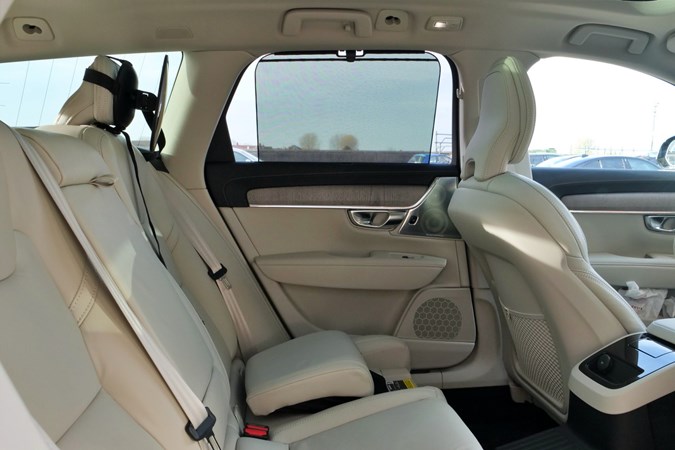
Generous rear accomodation
Rear seat space is even more impressive than the boot, with loads of legroom for adults and plenty of space for an Isofix seat. Headroom also impresses despite the panoramic roof, helping to make the V90 feel airy inside and provide birdwatching opportunities. There’s an electric roller blind to cover it on bright days, and a side window shade built into the rear door trims.
Further proof that Volvo has really thought about family life can be found in the seat bases of the rear bench. Press a button on the front of the squab and it can be pivoted up and clicked into place to become a booster cushion for bigger children. It’s a neat touch that we’d be happy to test, assuming we can keep hold of the car for a few more years….
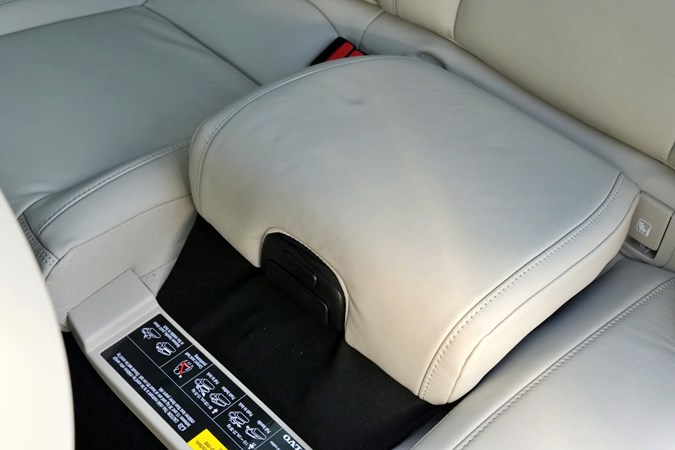
Fitting three in the back is easier than in most cars on account of the V90’s width. There’s a sizable hump in the centre of the floor that hides part of the battery pack, but enough space either side for three feet to sit quite comfortably. The centre seat is also more comfortable than most as you feel sat in it rather than perched on it. In fact, the only thing it really needs is separate climate controls for the rear, something that’s only available on mild hybrid V90s.
They wouldn’t be capable of the Volvo’s current 107mpg average fuel economy figure, though. Lots of short trips and regular charging have produced this figure, helped by a real-world electric range of around 35-40 miles depending on usage. While it means we’re rarely seeing filling stations, it’s also making our electric bill even more distressing than it could be.
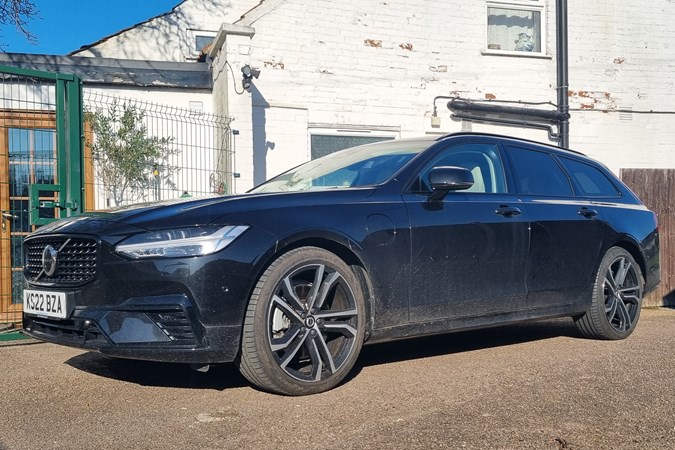
Update 3: Frosty the Volvo
Apologies to anyone who was waiting with bated breath for instalment three of the V90 chronicles, unfortunately the onset of winter highlighted a rather big issue with the climate control. Although it worked perfectly with the petrol engine on, the car’s cabin would refuse to heat and the windows would steam up when running in electric mode.
Considering the majority of weekday journeys are local, it meant either freezing or firing up the petrol engine. In the pre-facelift V90 this was easy. Simply rotate the clearly marked drive mode selector located near the gearlever, and you’d be able to select Hybrid or Power mode.
Of course, in the interests of minimalism/cost-cutting, this has now been binned and replaced with a menu in the touchscreen. Volvo aren’t alone in doing this, but most manufacturers at least have a shortcut to this menu. Instead, it’s hard to find with icons that are far too small, making it not just frustrating but borderline dangerous to switch modes on the move.
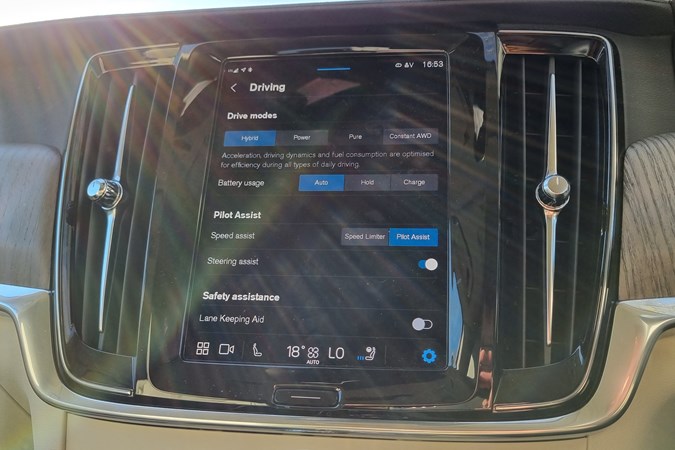
Thirsty work
With the engine now doing all of the heavy lifting, economy has plummeted. How much? Less than 30mpg on urban trips was a fairly common sight before the V90 went off for repair. Ah yes, the repair. Typically, the faulty part took a little while to arrive, so we were without ‘our’ V90 for a couple of months.
While we had replacement Volvos to keep us mobile, they simply highlighted how plush the V90 is. Even a top-spec XC60 SUV couldn’t quite match the spread of soft-touch plastics, richness of materials and general feeling of luxury that makes the V90 such a sumptuous place to spend some time. That’s not to say the XC60 is bad, it’s just that even compared to a Mercedes E-Class or BMW 5 Series, the V90’s quality impresses.
Once the V90 was finally back on our drive, I decided to carry out a little experiment. Rather than diligently charging every night to maximise our electric running, I went through half a tank of petrol without plugging it in. As my efficiency records had been wiped, it was easy to see the V90 averaging around 32mpg in mixed driving with plenty of town duties.
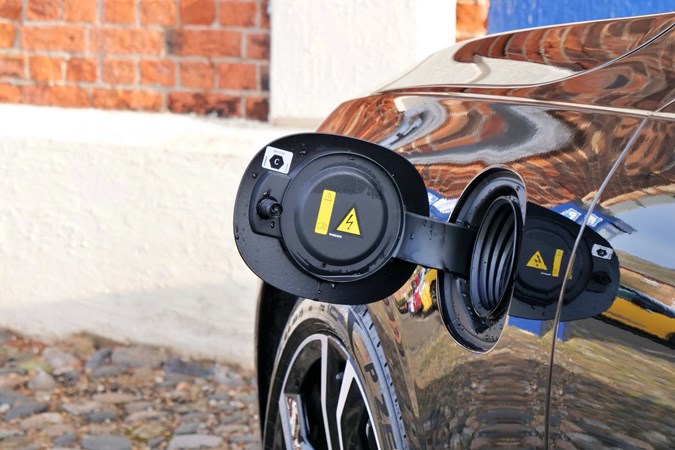
Swings and roundabouts
While on the face of it 32mpg isn’t great, it’s also not a bad figure for a 350hp, two-tonne-plus estate car that drinks petrol. Besides, while we’ve got nowhere near the claimed 50 miles plus of electric-only range, it’ll comfortably do around 35 miles. That’s a good 15 or so miles better than what I’ve experienced in pre-update V90s with the smaller battery, and enough to have a big impact on economy.
Despite the current V90’s sizeable battery pack, we’ve had no issues charging using a three-pin plug. In most cases it’ll get up to 100% overnight and I’ve got into the habit of just plugging it in as soon as we park up at home. It might seem excessive for a two-mile trundle to the shops, but it means we won’t be left with our charge levels down should there be an unexpected longer trip.
So all is good in isolation, but could a conventionally powered rival tempt us away from the V90? A week with a BMW 530d should answer that question nicely.
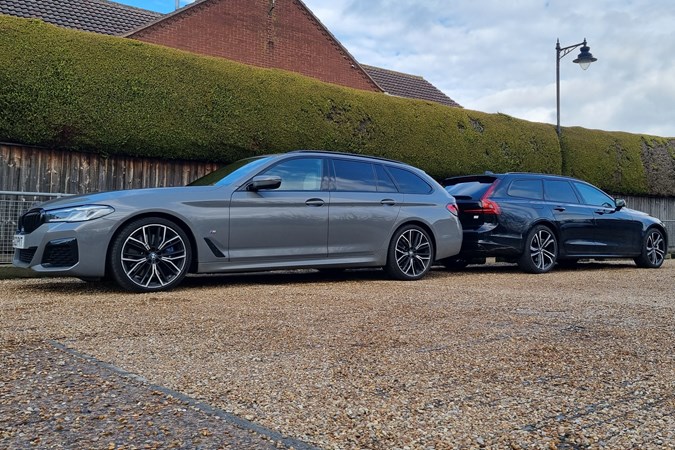
Update 4: Checking out the competition
Although my wife is fully in love with our V90, there’s a bit of me that’s been craving something a bit more fun. Don’t get me wrong, a 0-62mph time of just over five seconds in a sober-looking estate car never gets old at the traffic light grand prix, but the Volvo’s safe and secure approach to handling doesn’t exactly get your heart racing.
For most people that’s a good thing. After all, you don’t want your family car snapping sideways if you run out of grip. Instead, the V90 always washes wide at the front first unless you provoke it on a really slippery surface in electric mode. Even if you do clog it (without waking the petrol engine that drives the front wheels), all you feel is a slight sideways shuffle from the electrically powered rear wheels before the stability control sorts everything out.
To help keep its occupants safe, Volvo has even removed the stability control’s sport mode that allowed a tiny bit more slip. All in all, that leaves the V90 as a car with lots of grip, but no real feeling of dynamism; brisk cornering soon makes you aware of the two-tonne-plus weight of the PHEV and has the stability control flashing away.
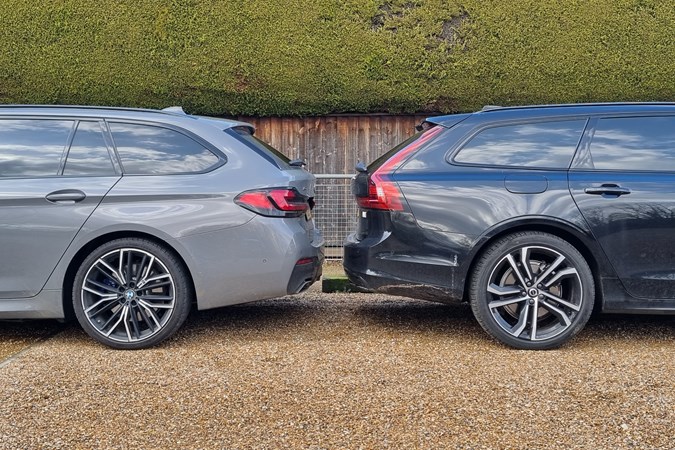
I know from personal experience that the A6 Avant and Mercedes E-Class Estate are nearly as po-faced (RS6 and E63 excluded), so I was soon on the phone to BMW to get my hands on a 5 Series Touring. Now, I could have made it a fair fight and ordered a 530e PHEV for my little twin test, but where’s the fun in that?
Instead, I went for the 1990s alternative, a big diesel. Once so popular, the 3.0-litre six-cylinder 530d has now been taken off sale in the UK and looks unlikely to return with the new model due late in 2023. It’s a shame as I’ve always been a fan of its combination of long-distance economy and punchy performance.
On paper, the 286hp of the 530d is some way down on the 350hp of the V90 T6 Recharge, yet the BMW is supposedly capable of 0-62mph in 5.4 seconds. However, in most situations it’s the Volvo that feels brisker on account of its instantaneous electric assistance and the BMW’s somewhat hesitant gearbox.
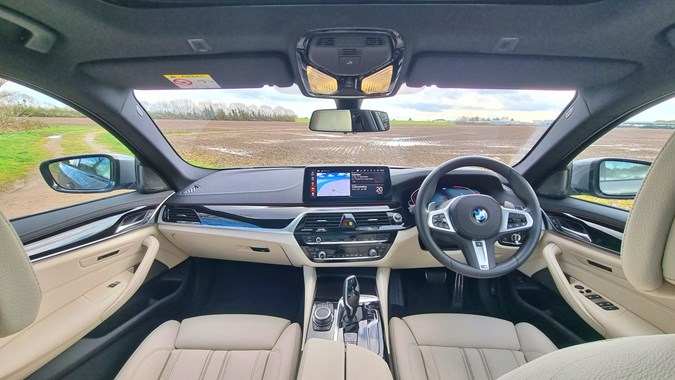
Flicking the 530d’s eight-speed automatic to Sport mode wakes it up somewhat, although it also holds onto gears a little too long, hurting economy. Perhaps surprisingly, it’s the BMW’s diesel that’s the more refined engine when pushed. Where the Volvo’s 2.0-litre four-cylinder petrol engine can sound quite gravelly if you’re overtaking or just dealing with a short motorway slip, the 530d is an exceptionally smooth diesel that actually sounds quite appealing.
Like the V90 the 530d is four-wheel drive, but where the Volvo is heavily front biased, the BMW is set to send power rearwards unless slippage is detected. This leads to a far more neutral or, if you turn off the stability control, rear-biased torque split that makes it feel more agile and involving.
It’s not like the 5 Series is a great deal less comfortable, either. The V90 lopes along in a pleasantly wafty way on smoothly surfaced but undulating roads. Throw a few potholes and sharp-edged lumps at it, and the 20-inch wheels soon make themselves known with the odd thud and thump.
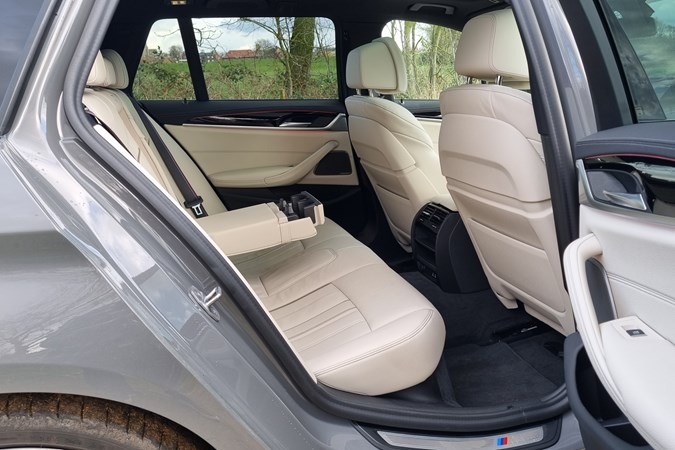
There’s no doubt the 530d is a bit firmer even with its adaptive dampers set to Comfort, but there’s also more control to the body movements over undulating Fenland roads. This makes for a more consistent ride that appeals to my finely tuned road tester’s bottom. As for boot space, it’s virtually a draw between the BMW and Volvo for capacity, despite the latter having far more generous rear leg room.
So, it’s an easy win for the 5 Series Touring, right? If we’re looking at this from a purely driving perspective, then yes. It’s quick enough (despite what my wife says), handles more sharply and won’t rattle your child’s baby teeth out, either. However, as pleasant as the 530d is inside, it can’t quite match the calming ambience or material richness of the V90 that makes it such a wonderful, if not quite perfect thing to settle into. More on that next time.
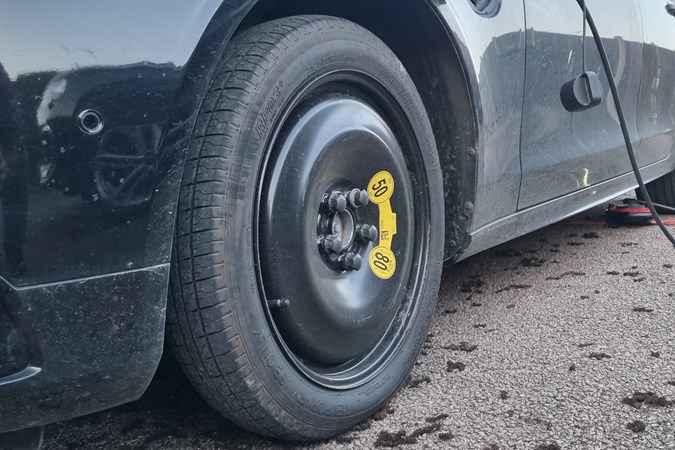
Update 5: An oasis of calm. Mostly
If there’s one thing the V90 is exceptional at, it’s easing away your troubles after a long day. Sinking into the optional heated and cooled Nappa leather seats, I can toast my buns on a cold day or chill them if we enter another heatwave. The multitude of electric adjustments makes it easy for all shapes and sizes to get comfortable, and the memory function makes switching drivers pain-free.
Quality is truly impressive, with leather (or at least a convincing substitute) covering the dash and inside of the doors and expensive-feeling controls. Unfortunately, Volvo is another manufacturer that’s decided buttons are evil, with far too many controls being operated by the central touchscreen. At least the steering wheel buttons remain just that rather than touch-sensitive icons.

A bit more storage up front would be handy – there’s not much space under the front armrest, for instance – and after just a few months there’s some blue residue on the driver’s seat from jeans. That’s partially my fault for picking cream leather, black is also available along with a ‘vegan’ option that uses wool. It’s a nice idea in theory and the seats look good, but they feel a bit overstuffed to me.
Our calm was shattered predominantly by pothole-strewn roads around Norfolk, though. Nipping to a nearby village to collect my wife and son, I couldn’t avoid one and clattered through with a nasty thump. All looked fine when I got home, but the next day I had a flat tyre caused by what turned out to be a bent rim.
The can of tyre goop in the boot wouldn’t have a hope of patching things up, and there’s no room for a spare, either. In the end, we had to borrow a temporary space saver from Volvo Assist whilst we waited for a replacement rim which took a couple of weeks. Chatting to the guys at my nearest Volvo dealer, they’re seeing their fair share of bent wheels. Given the 20in rims and thin sidewalls on Ultimate trim and the state of our roads, I can’t say I’m surprised.
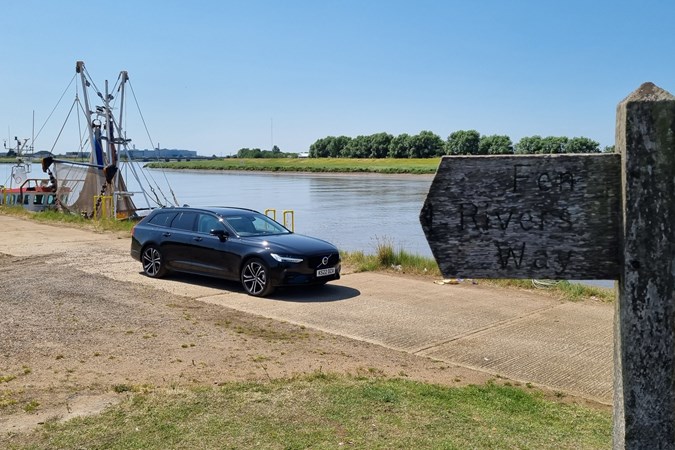
Update 6: Goodbye V90, goodbye Volvo estates full stop.
There are two very good reasons why the Taylor-Jones household is rather sad this month. Not only is it time for the V90 to go back to Volvo, but the brand has also announced that it’ll no longer be selling estates, or saloons, in the UK. The only exception? Emergency services can still order themselves a wagon, the lucky so-and-sos.
The reasoning behind this is simple. Despite being famous for its estates, Volvo sells way more SUVs than it does wagons. While this won’t upset the legions of people who’ve forced this change, our time with the V90 has proved it’s still a fine family hauler. No, you can’t get a third row of seats like its predecessors or an XC90 SUV, but unlike rivals there’s no bootspace penalty for picking the PHEV despite there being space under the floor for at least one charging cable.
That’s not the case with the BMW 5 Series Touring or Mercedes E-Class estate, both of which are compromised in electrified guise. The V90 also has more rear seat space that either, making it a better option for those in the back and ensuring whoever sits in front of the Isofix seat doesn’t have to wind their seat uncomfortably towards the dashboard.
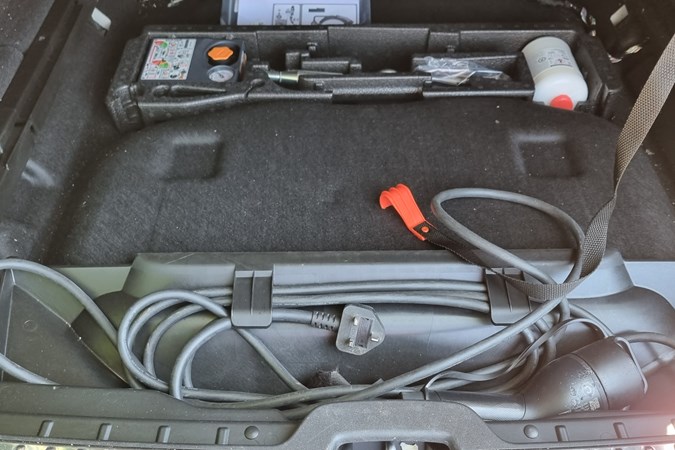
I do wish the V90 charged faster, though. Although I’ve had a 7.4 kW home wallbox fitted for the V90’s replacement, an all-electric BYD Atto 3, the Volvo can only take 3.6kW on a single-phase supply. Don’t get me wrong, it’s a big improvement on a three-pin plug charger that required all night to charge, but it could still be better.
We did keep the V90’s battery charged where possible at a cost of around £5.90 on a normal domestic tariff. With a range of around 35 miles on average – more in town and less on the open road – we managed 82.7mpg over the final 2,383 miles. This included a 320-mile round trip to see friends in Surrey with the V90 only charged at the start of the journey.
Our return leg with a flat battery netted 37mpg at a constant motorway and A-road cruise with some traffic jams thrown in for good measure. That’s an improvement on earlier long journeys, and arguably a reasonable figure given the swift acceleration that’s very useful for getting past trucks and tractors on Norfolk’s many single carriageway A-roads.
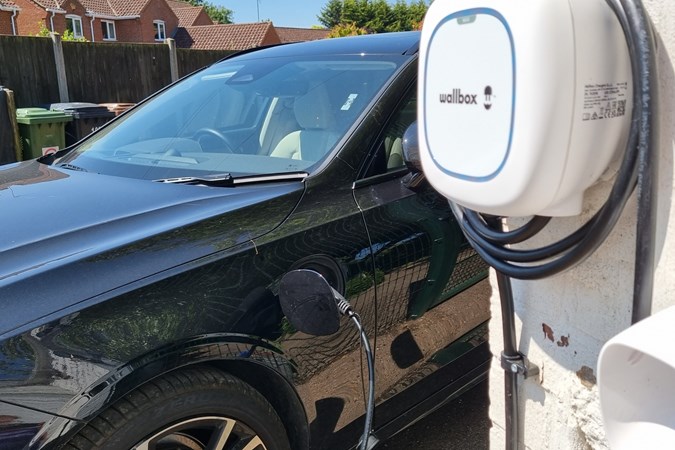
Apart from the earlier heating issues and the bent wheel which was very much my fault, the V90 has proved to be a dependable workhorse. Driver’s seat staining aside, the interior has stood up well to everything my two-year old son could throw at it (snacks, mainly) without developing any squeaks or rattles. In fact, my only real quality complaint is that the paint seemed easily marked by bushes when squeezing past traffic on single track roads. Even the much cheaper BYD Atto 3’s paint seems better at shrugging off branches.
So, would the V90 be my family car of choice? Well, the E-Class Estate has a bigger boot and wider range of engines, the 5 Series Touring is nearly as practical and more entertaining to drive, while the Skoda Superb is even roomier and far cheaper. On paper, the Volvo is outclassed.
And yet my wife and I already feel like an important member of the family is missing. Yes, rivals make more sense, but the V90’s interior has a Scandinavian charm that feels far more welcoming than its Germanic rivals. Its heavy reliance on touchscreens irked, yet the V90 undoubtedly felt more luxurious overall.
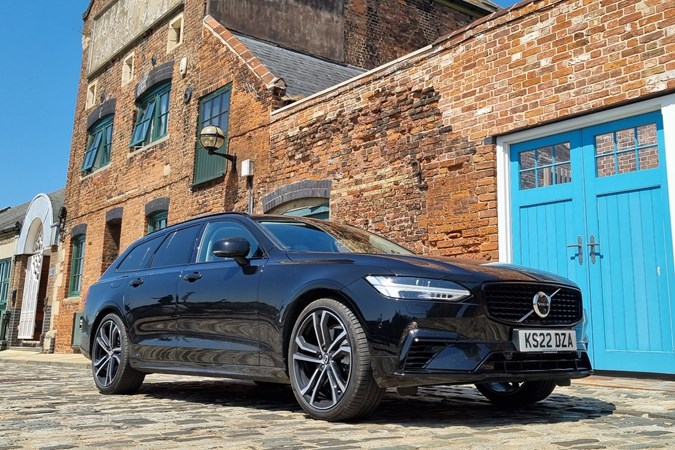
As for the updates over Keith Adam’s old V90 T8 long termer, some are more welcome than others. The additional battery range was most welcome, as was the uprated rear motor for speedier electric acceleration. Yes, power is down but it feels more balanced front to rear as a result, with far less torque steer.
However, culling yet more physical controls from the cabin didn’t make it easier to use, and I’d have welcomed Android Auto to the Google-based infotainment system. Overall, the V90 bows out as a slightly left field choice that is hard to recommend on rational grounds, but very easy to fall in love with.











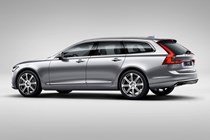

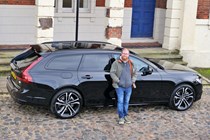
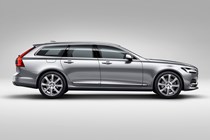

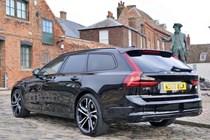
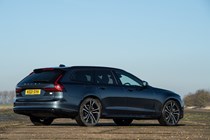
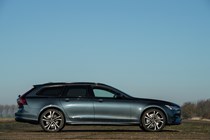

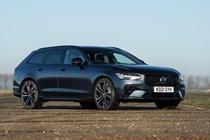
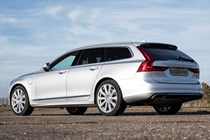


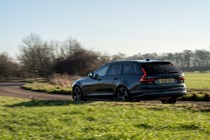
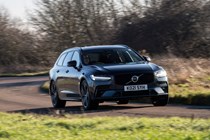
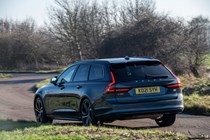

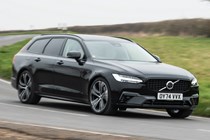
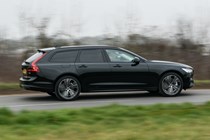
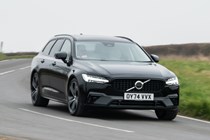

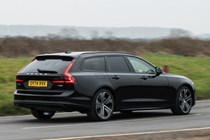
.jpg)
.jpg)
.jpg)

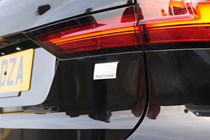
.jpg)
.jpg)
.jpg)
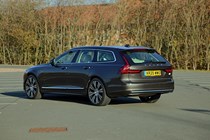
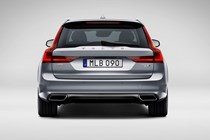
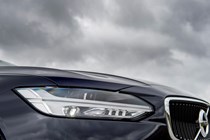
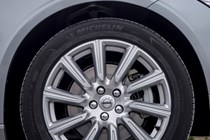
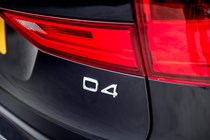
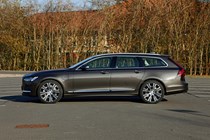
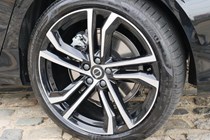
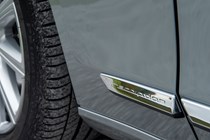
.jpg)
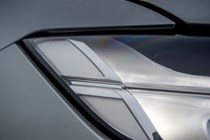
.jpg)

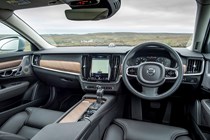
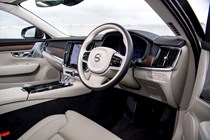
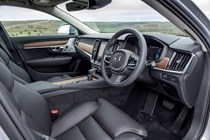
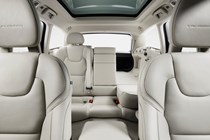
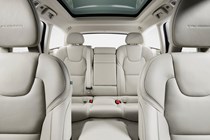
.jpg)
.jpg)
.jpg)
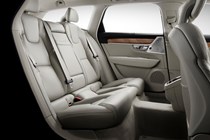
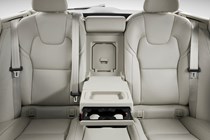
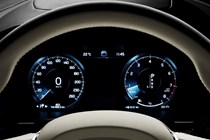
.jpg)
.jpg)
.jpg)
.jpg)
.jpg)
.jpg)

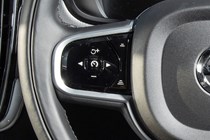
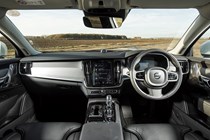
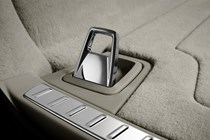
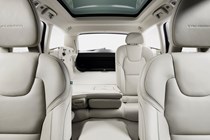
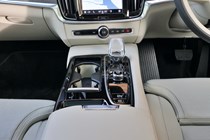

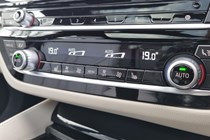

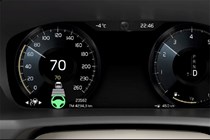
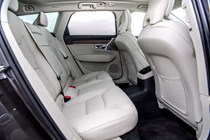
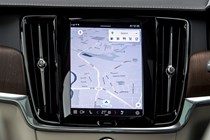

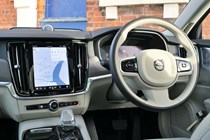
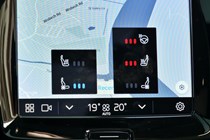
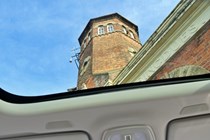
.jpg)
.jpg)
.jpg)
.jpg)
.jpg)
.jpg)
.jpg)
.jpg)
.jpg)
.jpg)
.jpg)
.jpg)
.jpg)
.jpg)
.jpg)
.jpg)
.jpg)
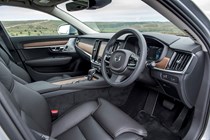

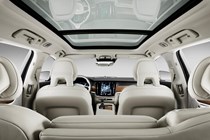
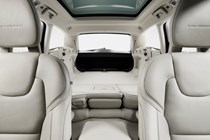

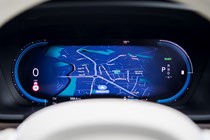
.jpg)
.jpg)
.jpg)
.jpg)
.jpg)
.jpg)
.jpg)
.jpg)

.jpg)
.jpg)
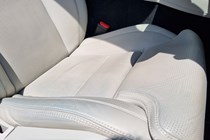
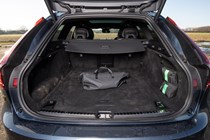
.jpg)


































.jpg?quality=50)
.jpg?quality=50)
.jpg?quality=50)


.jpg?quality=50)
.jpg?quality=50)
.jpg?quality=50)








.jpg?quality=50)

.jpg?quality=50)






.jpg?quality=50)
.jpg?quality=50)
.jpg?quality=50)



.jpg?quality=50)
.jpg?quality=50)
.jpg?quality=50)
.jpg?quality=50)
.jpg?quality=50)
.jpg?quality=50)
















.jpg?quality=50)
.jpg?quality=50)
.jpg?quality=50)
.jpg?quality=50)
.jpg?quality=50)
.jpg?quality=50)
.jpg?quality=50)
.jpg?quality=50)
.jpg?quality=50)
.jpg?quality=50)
.jpg?quality=50)
.jpg?quality=50)
.jpg?quality=50)
.jpg?quality=50)
.jpg?quality=50)
.jpg?quality=50)
.jpg?quality=50)






.jpg?quality=50)
.jpg?quality=50)
.jpg?quality=50)
.jpg?quality=50)
.jpg?quality=50)
.jpg?quality=50)
.jpg?quality=50)
.jpg?quality=50)

.jpg?quality=50)
.jpg?quality=50)


.jpg?quality=50)


